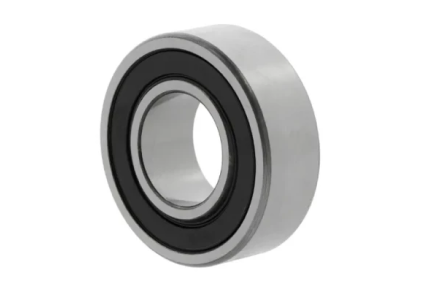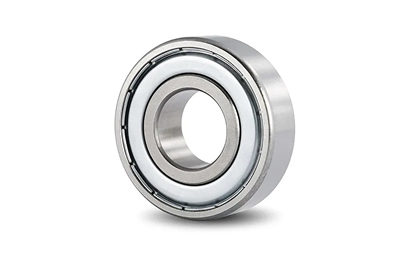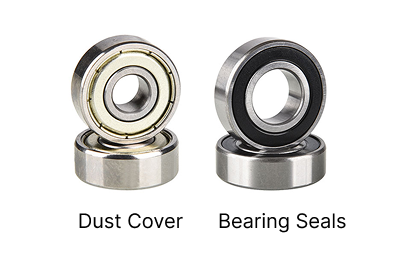Bearing Seals and Shields: Difference and Which Should You Choose?
Introduction
Bearings are like the joints in machines, keeping everything moving smoothly. But to work well and last long, they need protection from dirt, water, and lubricant leaks.
That’s where bearing seals and shields come in! Have you ever wondered how these tiny parts make a big difference? In this article, we’ll explore what bearing seals and shields do, their differences, pros and cons, and tips for installing them. Let’s dive in and find out which one might be right for your needs!
What Are Bearing Seals and Shields?
Bearing Seals
Bearing seals (eg. BS2-2218-2RS/VT143 )are usually made from flexible materials like rubber or plastic. They come in shapes like O-rings, U-rings, or V-rings and fit snugly on the inner or outer ring of a bearing. Their job? To stop lubricant leaks and keep out nasty stuff like dust or water. Seals either touch the moving parts of the bearing or create tiny gaps (called labyrinths) to block unwanted intruders.

Shields
Shields (eg. 6202 ZZC3), on the other hand, are simple metal shields, often stamped into a ring shape. They’re fixed onto the outer ring of a bearing and act like a barrier to keep dust and moisture out. Unlike seals, they don’t touch the moving parts, so there’s no friction—just pure protection from the outside world.

How Are Seals and Shields Different?
Structure
-
Seals: Made of stretchy materials like rubber, with various shapes to fit perfectly.
-
Shields: Simple metal plates, sturdy and easy to attach.
Function
-
Seals: Prevent lubricant leaks and block outside dirt, keeping the bearing greased up.
-
Shields: Stop dust and water from sneaking in, keeping things clean.
Think of seals as all-around protectors and shields as lightweight defenders. Which one do you think suits your machine better?
Common Problems with Bearing Seals (and How to Fix Them)
Seals are awesome, but sometimes they run into trouble. Here are some issues you might face and easy fixes:
Seals Spinning with the Bearing
-
What Happens: The seal spins when the bearing moves (it shouldn’t!).
-
Why: The seal’s edge is too small, so it slips.
-
Fix: Make the edge and inner lip bigger for a tighter grip.
Seals Not Fitting Properly
-
What Happens: The seal’s lip lifts up and doesn’t hug the bearing.
-
Why: Bad installation or wrong size.
-
Fix: Double-check the lip direction during installation and use the right size.
Seals Falling Off
-
What Happens: The seal pops out of its slot.
-
Why: Not enough tightness between the seal and slot.
-
Fix: Increase the fit and test it with a drop test.
Outer Ring Cracks Too Wide
-
What Happens: The bearing’s outer ring splits too much during installation.
-
Why: Too much pressure from the seal.
-
Fix: Keep the gap around 0.5mm—just right!
Inner Ring Gets Stuck
-
What Happens: The bearing won’t turn after adding the seal.
-
Why: The seal’s lip presses too hard on the inner ring.
-
Fix: Reduce the pressure so it moves freely.
Seal Lip Gets Caught
-
What Happens: The seal’s lip flips inside during rotation.
-
Why: Too much pressure or a weak design.
-
Fix: Lower the pressure and strengthen the lip.
Tips for Installing Bearing Seals
Want your seals to work perfectly? Follow these friendly tips:
-
Keep It Clean: Wash all parts of the system before installing.
-
Check the Lip: Make sure the seal’s lip faces the right way—no damage allowed!
-
No Hammers: Use special tools to press the seal in gently.
-
Match Sizes: New seals should be the same size as the old ones.
-
Inspect First: Look for cracks or bumps on the seal before using it.
-
Avoid Overload: Don’t run the bearing too hard for too long—it could leak!
Pros and Cons: Shields vs. Seals

-
Pros:
-
Simple design, easy to install, and cheap to maintain.
-
Great for high-speed bearings, keeping dust and water out.
-
Tough metal resists rust in harsh conditions.
-
-
Cons:
-
Weak against liquid water or grease.
-
Fast spinning might let some dirt sneak in.
-
If they break, protection is gone fast.
-
Seals
-
Pros:
-
Awesome at sealing lubricant in and dirt out.
-
Perfect for low-speed, heavy-duty bearings under pressure.
-
Flexible materials handle shakes and shifts.
-
-
Cons:
-
Tricky to install or remove—needs skill.
-
High speeds can heat them up and wear them out.
-
Materials might rot or weaken over time.
-
Which sounds more like what your bearing needs?
Choosing the Right One: Seal or Shield?
Picking between a seal and a shield depends on your situation:
-
Shields: Best for high-speed machines in cleaner settings, like fans or motors.
-
Seals: Ideal for slow, heavy machines in tough, dirty places, like construction gear.
No matter which you choose, check them regularly to keep your bearings happy and healthy!
Why Seals and Shields Matter
Seals and shields might be small, but they’re superheroes for bearings. Seals lock in grease and block out mess, shining in heavy-duty jobs. Shields fend off dust and dampness, excelling at high speeds. Installing them right and choosing wisely can make your equipment last longer and run smoother.
Fun fact: A tiny seal or Shield could be the secret to keeping your machine going strong! So, what do you use in your projects? Let us know your thoughts—we’d love to hear from you!
